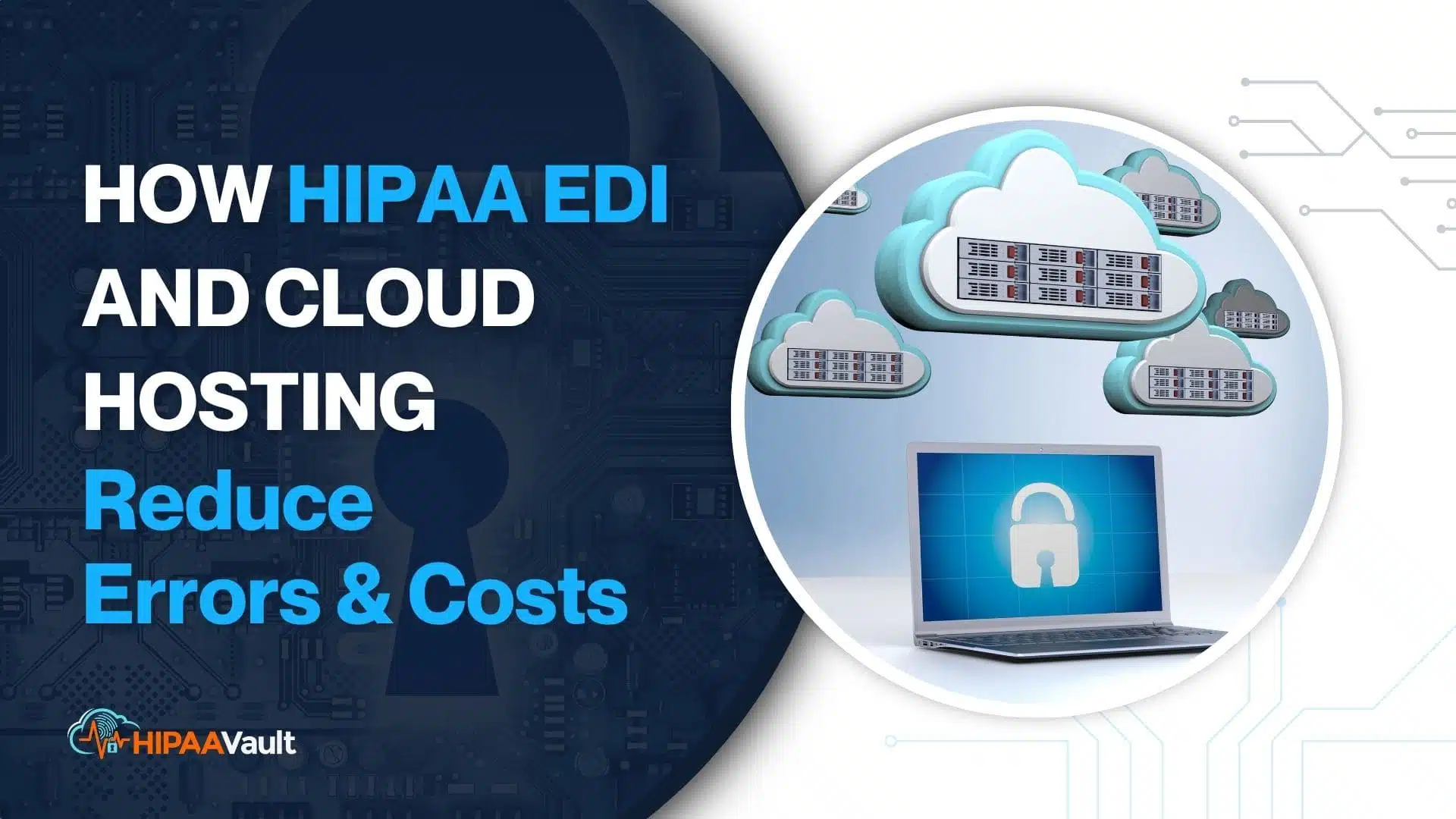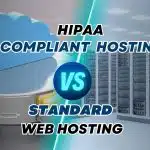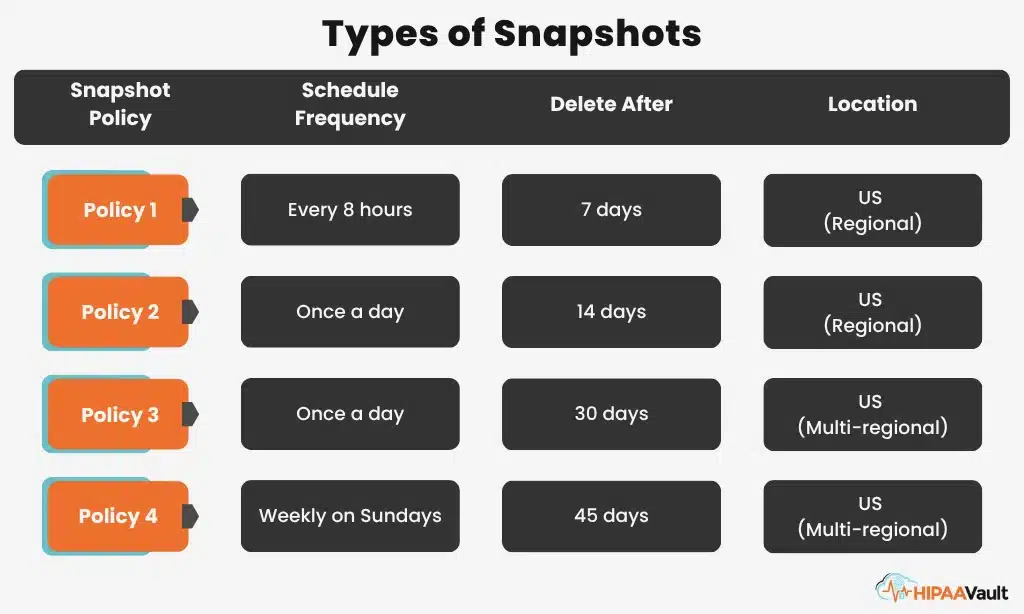Introduction & Key Takeaways
In today’s healthcare environment, Electronic Data Interchange (EDI) is essential for secure, efficient workflows. When combined with HIPAA-compliant cloud infrastructure, EDI ensures Protected Health Information (PHI) is transmitted safely while meeting strict regulatory requirements.
Key Takeaways:
- EDI reduces errors and accelerates reimbursements by automating workflows.
- The HIPAA EDI Rule requires covered entities to use standard transaction sets for compliance.
- Effective EDI platforms need validation, audit trails, and system integration.
- HIPAA-compliant cloud hosting adds encryption, identity controls, backups, and signed BAAs.
- Compliance is a shared responsibility between cloud providers and covered entities.
- Choosing a trusted partner like HIPAA Vault ensures a secure, compliant, and scalable solution.
👉 Get in Tocuh with HIPAA Hosting experts
EDI in Healthcare: Why It Matters for Compliance & Efficiency
Electronic Data Interchange (EDI) replaces outdated methods like fax and paper claims with structured, automated exchanges between payers, providers, and clearinghouses.
Why EDI matters for healthcare organizations:
- Accelerates eligibility checks, claims, and remittances
- Reduces transcription errors and rework
- Ensures consistent data formatting and validation
- Supports compliance with HIPAA Administrative Simplification
The HIPAA EDI Rule: Standards & Compliance
Under 45 CFR Part 162, HIPAA requires healthcare entities to adopt standardized EDI transactions, including:
- 837 (claims)
- 835 (remittance)
- 270/271 (eligibility inquiry/response)
- 276/277 (claim status)
- 278 (authorizations/referrals)
- 834 (enrollment)
Noncompliance can result in fines and exclusion from federal programs. Best practices include:
- Software enforcing proper formatting and error handling
- Encryption of PHI at rest and in transit
- Audit trails and role-based access
- Signed Business Associate Agreements (BAAs)
Core EDI Transaction Types in Healthcare
| Transaction | Use Case |
| 270/271 | Eligibility inquiry & response |
| 837 | Claim submission |
| 276/277 | Claim status tracking |
| 835 | Payment/remittance advice |
| 278 | Prior authorization/referral |
| 834 | Enrollment & benefits updates |
📌 Hosting these workflows on HIPAA Vault ensures compliance and secure exchange of PHI.
How EDI Reduces Errors & Cuts Administrative Costs
Manual data handling in healthcare — whether through paper claims, fax, or even email — is slow, error-prone, and expensive. Every typo, missing field, or formatting mistake creates delays that ripple through the revenue cycle, increasing rework and denied claims.
How EDI Reduces Errors:
- Automated Validation: Before data is transmitted, EDI enforces strict formatting rules, ensuring required fields are complete and consistent.
- Error Detection & Acknowledgment: Built-in alerts flag issues immediately, so staff can correct errors before claims reach payers.
- Elimination of Manual Entry: Direct system-to-system transfer removes the risk of human transcription errors.
- Standardization: With HIPAA-mandated formats (e.g., 837, 835), all parties exchange data in the same structured way, reducing ambiguity.
How EDI Cuts Administrative Costs:
- Lower Labor Costs: By automating repetitive tasks like claim submission and eligibility checks, staff spend less time on manual data entry and follow-ups.
- Reduced Paperwork: EDI eliminates postage, faxing, printing, and storage costs.
- Faster Payments: Clean claims processed through EDI reduce rejections and speed reimbursements, improving cash flow.
- Scalable Efficiency: Once in place, EDI systems can handle increasing claim volumes without requiring proportional increases in staff.
According to the Workgroup for Electronic Data Interchange (WEDI), healthcare organizations can cut 30–50% of administrative overhead through EDI adoption. For providers, that means fewer denied claims, faster revenue cycles, and more time for patient care instead of paperwork.
📌 With HIPAA Vault’s HIPAA -compliant cloud hosting, EDI workflows are secured with encryption, access controls, and continuous monitoring — so you gain efficiency and stay compliant.
Critical Features for Healthcare-Grade EDI Systems
A robust EDI platform should include:
- Full HIPAA transaction support
- Data mapping and validation tools
- Real-time dashboards
- Audit logs and role-based access
- Secure encryption (TLS, AES-256)
- Disaster recovery and backups
🚀 With HIPAA Vault, these features are backed by managed hosting built for healthcare.
Role of HIPAA-Compliant Cloud Infrastructure
Healthcare EDI requires infrastructure that meets NIST Cybersecurity Framework guidelines:
- Encryption
- Access control
- Logging & monitoring
- Backups & recovery
- Signed BAAs
HIPAA Vault delivers these as part of a fully managed, compliant environment.
Migrating to a HIPAA-Compliant Hosting Environment
Migration isn’t just file transfer—it’s securing every PHI touchpoint. Key steps:
- Map PHI data flows
- Secure transfer using TLS/VPN
- Apply MFA, intrusion detection, logging
- Test backups and controls before launch
📌 Explore our Pricing and Products
Shared Responsibility: Cloud & Covered Entities
Compliance is shared:
- Cloud provider secures infrastructure
- Covered entity manages configurations, applications, and user access
Challenges & Risks in EDI / Cloud Adoption
Common risks include:
- Legacy system integration
- Vendor lock-in
- Misconfigurations
- Regulatory changes
Mitigation strategies: audits, continuous monitoring, and managed hosting. WEDI offers best practice guidance.
FAQs
Conclusion
EDI + HIPAA-compliant cloud hosting = streamlined workflows, reduced costs, and secured PHI. The right partner ensures both efficiency and compliance.








